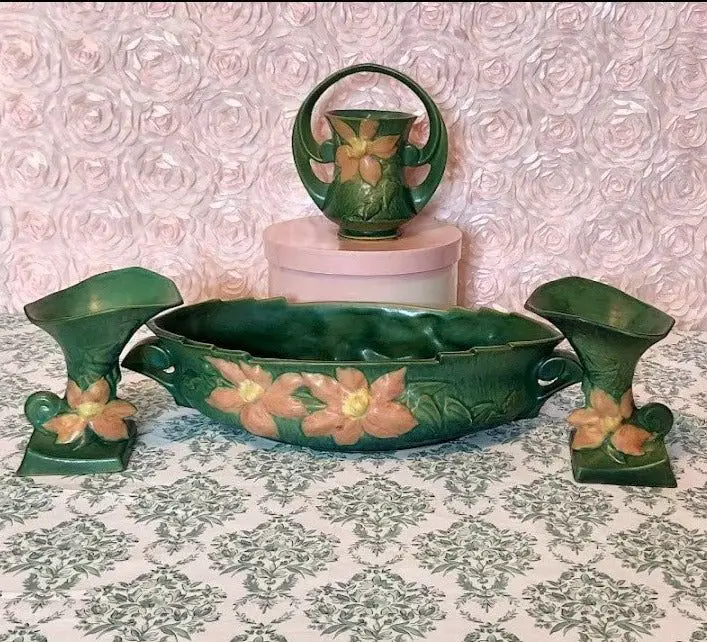How Much Money Can You Make From Ceramics?
Making ceramics can be a rewarding hobby or a full-time career. For many, working with clay is a creative outlet and ceramics classes are popular among hobbyists. However, some take their passion further by starting a ceramics business and selling their artwork. This allows talented ceramicists to earn an income from their craft.
Launching a ceramics business requires dedication, skill, and some startup funds. But the potential payoff can be worth it for artists who love working with clay. A successful ceramics business allows creators to make money doing what they enjoy.
This article will explore ceramics as a business and career path. We’ll look at the startup costs, profit margins, and income potential. The goal is to provide an overview of the ceramics industry and how artists make a living from their craft.
Ceramics as a Hobby vs Career
Many people get into working with ceramics because they find it enjoyable and relaxing. It starts as a hobby – something they do for fun in their spare time. However, some hobbyists find they have a real talent for it and decide to turn their hobby into a business. This creates an important distinction between doing ceramics for fun versus doing it for profit.
The main difference between a hobby and a business is whether you intend to make money from your ceramic work. As a hobby, you create pieces for yourself or to give as gifts, without trying to earn an income. With a business, your goal is to generate profits by selling your ceramic creations (Ceramic Arts Daily).
You may be wondering when the IRS considers your hobby a business. Typically once you start earning regular income, advertising, and operating in a business-like manner, the IRS will classify it as a business, not a hobby (CR&I CPA Group). This has implications for taxes and deductions.
Turning a hobby into a career takes commitment, work, and business savvy. But for talented ceramic artists, it can be an extremely rewarding way to make money doing what they love.
Types of Ceramic Businesses
There are several types of businesses that can be started in the ceramics industry:
Pottery Studio
Opening a pottery studio allows you to produce and sell your ceramic wares on-site. This involves finding a physical retail space and outfitting it with the necessary equipment like a kiln, potter’s wheel, shelves, etc. You can offer pottery classes and workshops in your studio space as well. Setting up a studio requires a significant upfront investment but gives you a storefront to directly market and sell your pieces [1].
Online Shop
An online ceramic shop allows you to sell your pottery worldwide through your own website or art/craft marketplaces like Etsy. This has lower startup costs than a physical studio and gives you access to a broader customer base. However, you’ll need photography equipment and skills to beautifully showcase your work digitally. Fulfillment and shipping logistics are also important to master [2].
Wholesaling
Wholesaling involves producing ceramic products in volume to sell to retail stores, galleries, museums, and other organizations. This requires consistently producing quality pieces at scale. You’ll need a large studio space and potentially employees to meet higher production demands. However, wholesaling can provide a steady stream of business.
Teaching
Many ceramic artists supplement their income by teaching pottery classes at community centers, schools, or their own studios. Teaching provides a predictable income source and also helps market your skills to potential wholesale or retail customers.
Startup Costs

When starting a ceramics business, one of the biggest expenses is investing in the proper equipment and studio space. The main costs include purchasing a pottery wheel, clay tools, a kiln for firing, raw materials, and securing a workspace.
A pottery wheel can range from $300 for a basic tabletop model up to $2,000 or more for heavy-duty commercial wheels (https://www.starterstory.com/ideas/pottery-business/startup-costs). Clay tools like sculpting knives, ribs, cutters, etc. will cost around $200 to $500. A small electric kiln for firing pottery starts around $600 and goes up to $2,500 or more for large capacity professional kilns.
Raw ceramic materials like clay, glazes, and slips average around $500 to $1,500 to stock up initially. Securing studio space, whether renting a retail location or equipping a home studio, can cost anywhere from $2,000 to $10,000+ depending on size, lease terms, and necessary renovations or equipment.
All told, a starter ceramics studio for a small business can be equipped for $5,000 to $20,000 or more. Ongoing material expenses will also need to be budgeted for each month.
Profit Margins
Profit margins for ceramic artists can vary greatly depending on the type of work, materials, and operating expenses. For pricing finished ceramic pieces, most artists use the formula of material costs x 3. This means if materials cost $10, the retail price would be $30. This typically allows for a profit margin of around 60-70% on materials 1. However, when factoring in other operating expenses like studio rental, utilities, shipping, marketing, etc., the overall profit margin is generally closer to 15-20% for full-time ceramic studios and businesses 2.
For ceramic artists just starting out or selling at lower volumes, the profit margins are slimmer, often 10% or less after expenses. As sales volume increases, profit margins can improve. Experienced ceramic artists selling high volumes of work can achieve profit margins of 40% or more 3. Careful pricing and financial management is essential to maintaining strong margins in the ceramics business.
Sales and Marketing
Marketing and selling ceramic art requires utilizing both online and offline strategies. Setting up an online store or gallery is essential for reaching customers globally ( Effective Online Store Building: 5 Steps for Ceramic Artists). This allows artists to display images of their work, describe processes, showcase collaborations, and directly sell pieces. Social media provides a platform to attract followers, promote new work, and drive traffic to your online store.
Participating in local arts festivals, craft fairs and gallery exhibitions also connects artists with potential buyers ( Clay Culture: Influencer Marketing). These in-person venues create opportunities to interact with customers, explain techniques, and demonstrate processes while showcasing finished wares. Collaborating with influencers, interior designers, home stylists and architects provides exposure to new audiences.
Building a Client Base
One of the most important parts of operating a successful ceramics business is establishing a loyal client base that provides repeat business over many years. Since most ceramic pieces are valued for their artistry, uniqueness, and craftsmanship, cultivating repeat customers who appreciate your style and brand is essential. According to one source, focusing on getting return customers instead of one-time sales will help ensure your business’s longevity.
There are several key strategies to employ when building a loyal following. First, make sure to capture customer contact info like emails and phone numbers so you can market to them directly in the future. Send out periodic newsletters showcasing your latest works. Offer discounts or early access to frequent buyers to make them feel valued. Maintaining open communication and providing excellent customer service helps create brand ambassadors who will recommend you to others through word-of-mouth referrals.
In addition to marketing directly to previous customers, look for opportunities to form relationships with interior designers, home stagers, architects, and other industry professionals who can connect you with clients needing unique, custom-made pottery and ceramic pieces. Participating in local artist markets and craft fairs is another way to directly interface with potential repeat customers in your community. Focus on making each buyer feel special and build one-on-one connections that will drive future business.
Income Potential
The income potential for ceramic artists varies greatly depending on whether it is pursued part-time or full-time. For part-time ceramic artists, income is often supplemental or treated as a side hobby. Full-time ceramic artists have the potential to earn a comfortable living from their craft.
For part-time ceramic artists, average earnings tend to range from $10,000 to $30,000 per year. This assumes the artist is selling their work at local art shows, galleries, or online in their spare time outside of another full-time job. Pricing for part-time ceramic artists usually ranges from $20 to $100 per piece depending on size and complexity.
Full-time ceramic artists have much higher earning potential, with average salaries ranging from $30,000 to $100,000 per year. Top ceramic artists can earn over $100,000 annually, especially those with an established brand name and reputation. Pricing for full-time artists generally starts at $100 per piece and can go up to thousands of dollars for large commissioned installations or specialty art pieces. Building up a broad collection and selling at higher price points is key to earning a comfortable living wage as a full-time ceramic artist (Source).
Growth Opportunities
Ceramic businesses have room to grow in a few key ways. As demand for their products increases, ceramic artists can look to expand their studio space to accommodate larger equipment like kilns and wheels as well as hire assistants and apprentices to increase production capacity (source). Developing a strong brand and style can also open up licensing opportunities, allowing the ceramic artist to license their designs to manufacturers for production of mugs, plates, and other home goods.
Expanding studio space comes with costs like rent, equipment, and renovations but can significantly increase production capacity. Hiring even just one part-time assistant or apprentice splits the labor and allows the artist to focus on higher-value creative tasks. Licensing deals provide passive income while manufacturers handle production and distribution, but does mean giving up some control over how products are made.
Conclusion
Overall, while starting a ceramics business or career has challenges, it can also be a fulfilling and potentially profitable endeavor for those with the required passion, business savvy and persistence. The income potential ranges widely based on your business model, marketing skills and reputation. On average, ceramic artists make $30,000-$40,000 annually from their craft according to industry surveys. However, renowned artists or those with wholesale/retail businesses can make over $100,000. The intangible benefits of doing creative and meaningful work are also a major perk for many ceramicists.
The keys to success are relentlessly improving your skills, finding your unique style and niche, mastering the business side of things, and building a broad client base and audience. While there are certainly challenges in turning ceramics into a profitable job, it is very possible with enough passion, talent and perseverance. For the right person, it can be an immensely satisfying and potentially lucrative career path.



